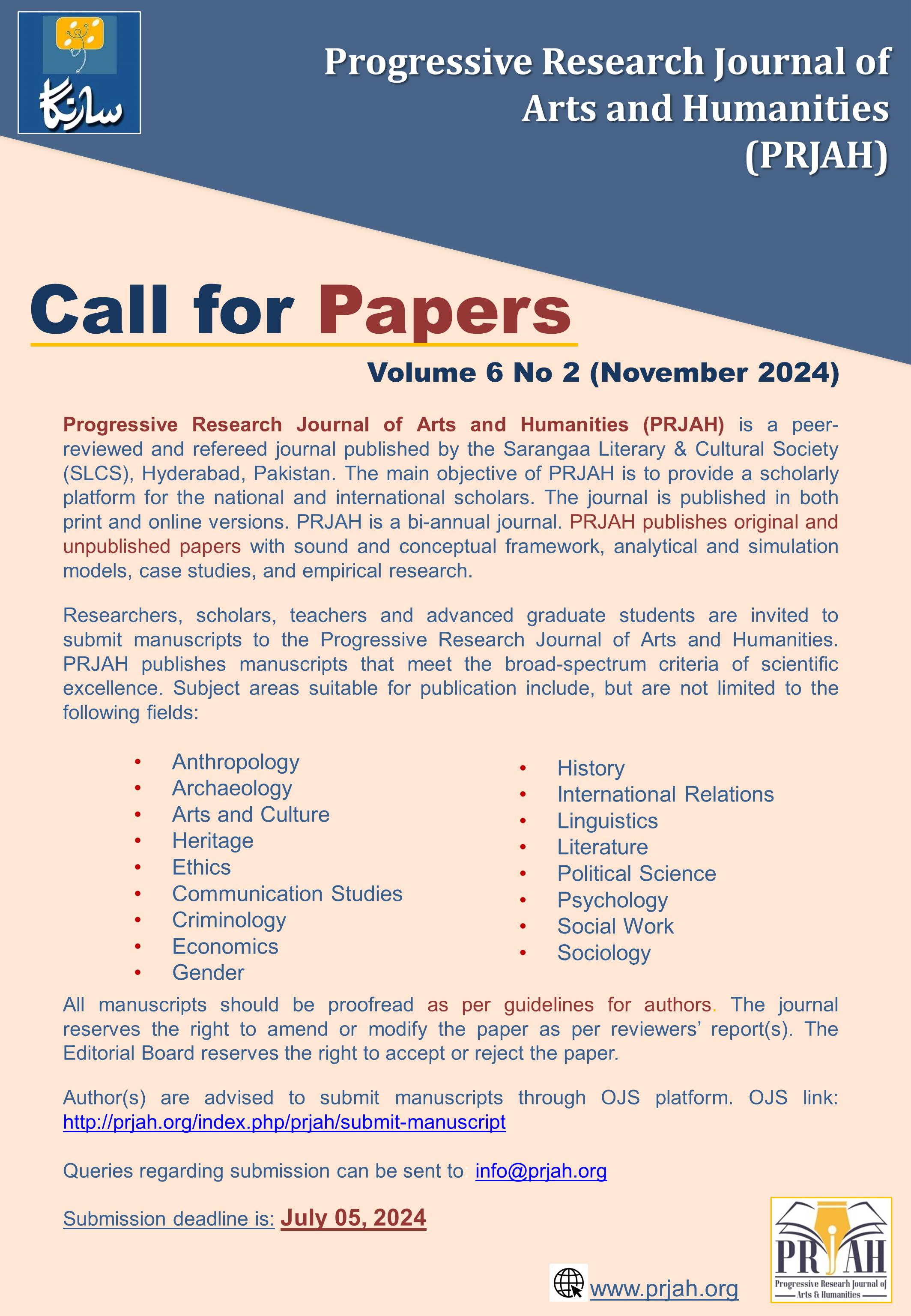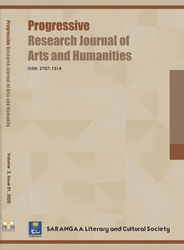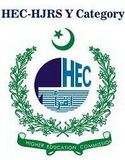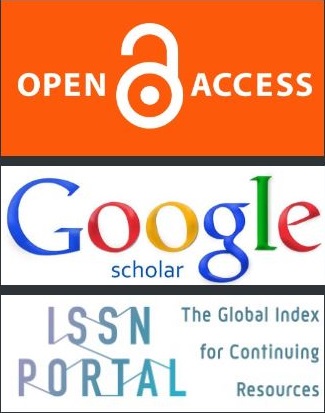
About the Journal
Progressive Research Journal of Arts & Humanities (PRJAH)
Progressive Research Journal of Arts and Humanities (PRJAH) is an international, open access, peer reviewed, multidisciplinary, biannually published journal. PRJAH is in HEC Y-category, Google Scholar, CrossRef DOI and dedicated to promote and publish original articles in the relevant field of arts and humanitiesand aims to reduce the gap between research and practice. PRJAH provides a platform for the researchers, academicians, professionals, practitioners and students to impart and share knowledge in the form of high quality empirical and theoretical research work. Read more
Current Issue
Articles
Progressive Research Journal of Arts & Humanities (PRJAH)

Progressive Research Journal of Arts and Humanities (PRJAH) is an international, open access, peer reviewed, multidisciplinary, biannually published journal. PRJAH is in HEC Y-category, Google Scholar, CrossRef DOI and dedicated to promote and publish original articles in the relevant field of arts and humanitiesand aims to reduce the gap between research and practice. PRJAH provides a platform for the researchers, academicians, professionals, practitioners and students to impart and share knowledge in the form of high quality empirical and theoretical research work. Read more
Our Mission
Our mission is to contribute to the progress and application of Social & Arts discoveries, by providing free access to research information online without financial, legal or technical barriers. All International Research Journals articles will be freely distributed and available from multiple websites.
Sarangaa
Sarangaa Literary & Cultural Society (SLCS) is a Hyderabad based non-profit organization which was established and registered in 2008 under Societies Act 1860. SLCS aims to promote peace, education, human rights/Women’s rights, youth leadership, interfaith harmony.






